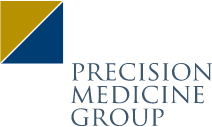First published in PharmaLive
Every doctor has one rare disease case that haunts them – like a 13-year-old with a healthy lifestyle who developed cirrhosis of the liver.
But that patient had been to five other specialists and still had no diagnosis. Eventually, they discover a rare genetic cause that prevented the child’s cells from breaking down lipids. How is it possible that healthcare providers (HCPs) were unable to determine the diagnosis?
The answer is rarity. The disorder – known as Lysosomal Acid Lipase Deficiency (LAL-D) – is ultra-rare, and there are so few identified cases that it is hard to estimate the exact prevalence.
Its estimated prevalence is somewhere between
1 in 40,000 and 1 in 500,000 births.
The patient’s HCPs may not have studied such disorders extensively during their medical training – or perhaps it was called something else when they were in medical school. That may have been quite some time ago, and many innovations have occurred since then in testing and diagnostic approaches.
Rare diseases that are not so rare
More than 300 million people around the world are living with one or more of over 6,000 rare diseases that have been identified. A disease is defined as ‘rare’ in Europe when it affects fewer than 1 in 2,000 people. Symptoms shared with more common diagnoses may hide underlying rare diseases, leading to misdiagnosis and delayed treatment.
According to the most recent study by the National Organisation for Rare Disorders (NORD):
- Nearly one in ten Americans lives with a rare disease
- Only 36% of respondents had been diagnosed with a rare disease within the first year in 2019, compared to 51% in 1989
- In 2019, 28% said it took seven or more years to secure a proper diagnosis
- 38% reported receiving a misdiagnosis during their diagnostic journey
- 50% of patients and caregivers attributed diagnostic delays to a lack of disease awareness.
‘In 2019, 28% said it took seven or more years to secure a proper diagnosis and 38% reported receiving a misdiagnosis, according to a recent study from NORD’
Occam’s razor
In medicine, Occam’s razor cuts both ways: they’re horses, except when it’s a zebra. The phrase, ‘When you hear hoofbeats, think horses, not zebras’, was coined by Theodore Woodward, MD, Chair of Medicine at the University of Maryland School of Medicine from 1954 until his retirement in 1981. This aphorism is meant to help doctors efficiently diagnose the common causes of disease rather than search for the rare ones.
This medical application of Occam’s razor is a helpful rule for diagnosing most patients. The principle posits that if two possible explanations exist for something, the one that requires the fewest assumptions is usually correct. Put another way, the more assumptions you must make, the more unlikely is the explanation.
Although this approach works well in certain settings, medical ‘zebras’ do exist. The same doctors who must diagnose and treat 100 cases of fatty liver disease (the horses) will also see that one patient with a genetic cause of abnormal lipid metabolism (a zebra). That patient may become a casualty of the other 99 diagnoses. So, it is important to develop reliable methods to help diagnose rare diseases.
As with every progressive disease, time is a critical and perishable commodity – the sooner a patient is diagnosed, the better, particularly in the case of a progressive or chronic condition. For example, it is well-published that the majority of patients with LAL-D will develop liver complications three years after they have their first symptom. So, if it takes seven years to receive a diagnosis in rare diseases, that does not give these patients much of an opportunity to treat this deficiency before it gets worse.
So, how can we help HCPs – who are intelligent and sympathetic to patients, but now have less time than ever – differentiate between nearly identical hoofbeats? If they had all the time in the world to read about rare diseases, they would likely diagnose every patient accurately. That is a vital aspect of who HCPs are and how they operate.
Helping HCPs consider rare diseases is not as simple as saying ‘you may be missing this, here is what you need to do’. It involves understanding the HCP’s particular diagnostic process and finding the best opportunities to suggest and offer new tools. This may involve:
- Diagnostic tools, both old and new – which one or two simple tests can decisively confirm or rule out a rare disease?
- One-page, easy-to-consume ‘cheat sheets’ outlining when to consider additional tests for rare causes
- Flags or links in electronic medical records linked to test results that would highlight results that may suggest a rare disease, with the goal of automating the process as much as possible.
Tactical tools are helpful, but they must work within a broader approach that is efficient, engaging and worthy of an HCP’s time. This involves leveraging multidisciplinary collaboration when diagnosing rare disease. Specialists who will diagnose and think about an approach from different angles can enable additional awareness-building and education beyond a singular group of HCPs.
Finding a proper clinical ‘zebra hunter-gatherer’
If one can be located, a clinician who has a history with a specific rare disease can be a valuable resource for sharing knowledge, data and experience. That clinician can provide insight throughout the diagnostic process, including advice on when to consider additional testing, suggesting proper testing equipment or providing access to such testing in a clinical centre of excellence.
More importantly, such clinicians can provide perspectives from their own journeys and stories as a way to help other HCPs. Such individuals offer guidance and instruction, of course, but they also provide a type of absolution to HCPs who may feel frustrated at what they perceive as an inability to find the answer for their patient – which is far from the truth of the situation. This kind of peer-to-peer interaction is a bedrock of engagement and information sharing that is effective in the long term.
Diagnostic journey as mystery novel: putting HCPs in a diagnostic ‘story’.
Developing and presenting mystery case stories helps clinicians test their diagnostic approach. In addition to being clinically engaging, this shows where and how HCPs can adjust a diagnostic approach and introduce new tests or ways of thinking that may help pinpoint the proper diagnosis. It is one of the reasons why the TV medical drama House was so popular – everyone likes to solve mysteries.
Working together
Once diagnosed, patients find relief in knowing – in having the mystery solved. The diagnosis provides a starting place for empowering patients about how best to manage their condition. It can also set the stage for a meaningful collaboration wherein patients and their HCPs work together and learn from each other. It allows HCPs to connect with their patients and manage the responsibility together.
The goal of this education is to share advances that can help clinicians help patients. Whether it is a new way to think about the diagnostic process, or educating HCPs about new genetic tests and diagnostic approaches, the goal remains to help HCPs help their patients.
For immunologists, hepatologists, oncologists – for ‘ists’ of all stripes – the ability to know what they don’t know often goes a long way toward being open to new thinking. Helping to equip HCPs to diagnose rare diseases is never about telling them how to do their job. The idea is to give them better tools – more powerful binoculars, if you will – to better spot the zebras through the dust of a stampede of horses.
And to provide relief, help, options, support and even hope.







